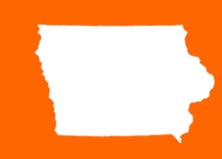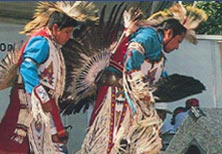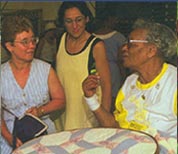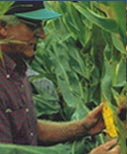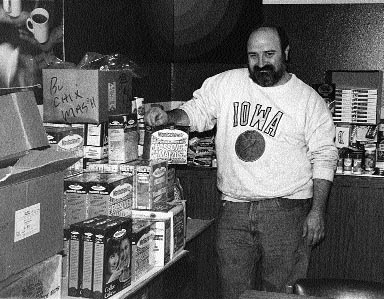| Questions to be Answered |
| Why is food an important part of a family’s heritage? |
| What recipes are passed down from generation to generation and why? |
| Do family foods and recipes change over the years or remain the same? |
| How do foodways vary in different social circumstances? |
|
FIRST CLASS LESSON
- Have students collect a family recipe, with some background or a story about the traditional food similar to the information provided by Loretta Hegeman and Elaine Kane. Illustrate the recipe, if desirable, with a sketch. Make sure the recipe fits on one 8 x 11 page and is written or typed clearly enough to photocopy well.
- Have students carry out an inventory of the pots, pans, and other cookware in their household kitchen. Are there any unusual cooking utensils or other items, like a Norwegian krumkake iron, tortilla maker, springform pan for a special baked good, or wooden spoons with a family history? Are any of these items family heirlooms? Pick one item to write about.
SUBSEQUENT CLASS LESSONS
- Photocopy the recipes and distribute them to students (or, alternatively, put them on an overhead projector for all to see):
- What are the similarities and differences?
- What does this collection of recipes tell us about Iowa's communities and cultural traditions?
- What do the background information or stories collected with the recipes tell us about the importance of family foodways?
- Arrange for an in-class cooking demonstration. Cook a simple recipe (either one collected by the students, or another) with the class. Discuss the skills, traditions, technologies, and other aspects of the dish.
HIGH SCHOOL ADDITIONS: View the video segment from Iowa Folks and Folklife on the Stanhope locker. Compare the food business to the foodways of a household. What roles are found in business that are not found at home? Are there gender differences? Are there different expectations among family members when compared to customers? How do business traditions compare to family traditions?
- Set up a family cooking session with someone in your family who is a good cook. Learn a recipe you never knew how to cook before. What did you and the family cook talk about while you were cooking? Write about the experience.
- Explore your refrigerator for "family food tradition clues." Is there a jar of Aunt Ida's homemade jelly? A bit of grandma's special fruitcake lurking in the back? A container full of Dad's Famous Chili from last Saturday's dinner? If possible, interview the person with whom a certain food in the fridge is associated. Write about this food and why it is significant to your family.
Pair students with seniors to talk about their family food traditions. Pick a common theme such as a holiday treat, the birthday cake you always request, or the main dish of a special occasion dinner. Make a list comparing and contrasting the foods discussed. If possible, bring each other the recipes for the foods.
| |
| |
|
Photo |
|
|
|
| |
LESSON 1.8 |
|
| Bill Ohringer runs the Nosh, a kosher deli in West Des Moines, and preserves Jewish traditions. How do foods acquire an “ethnic” identity? |
| |
|
PHOTO BY JANICE ROSENBERG |
|
|
